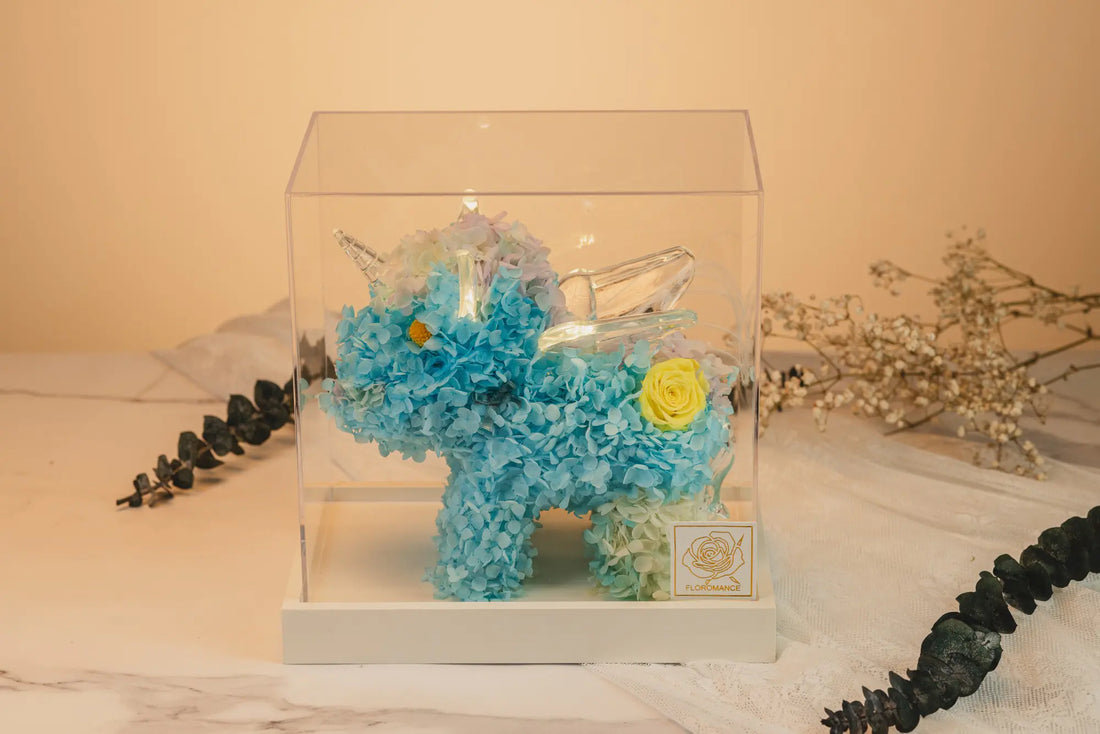
How Preserved Flowers Help Reduce Floral Industry Waste
Share
The floral industry, while beautiful, generates significant waste—from discarded blooms to plastic packaging and water consumption. Preserved flowers offer a sustainable alternative, dramatically cutting down on environmental impact. Here’s how:
1. Eliminating Short-Lived Waste
🌿 Problem: Fresh flowers last 5-7 days before wilting, ending up in landfills where they emit methane (a potent greenhouse gas).
✅ Solution: Everlasting flowers last years, eliminating the constant cycle of disposal and repurchasing.
Fact: The U.S. alone discards ~12 million tons of floral waste annually—enough to fill 5,000 Olympic swimming pools.
2. Reducing Water Waste
💧 Problem: Fresh-cut flowers require massive water usage—
- 1 rose stem = ~2 gallons of water over its lifetime
-
Flower farms consume billions of gallons annually
✅ Solution: Everlasting flowers need zero water after processing, saving thousands of gallons per bouquet.
Example: A preserved wedding bouquet saves ~500 gallons vs. fresh flowers.
3. Cutting Down on Chemical Pollution
⚠️ Problem: Conventional flower farming relies on:
- Pesticides (70% of cut flowers are treated with toxic chemicals)
-
Preservatives (like formaldehyde in floral foam)
✅ Solution: Ethically eternal flowers use: - Non-toxic glycerin-based solutions
- Natural dyes (vegetable/fruit-based)
- No floral foam (a microplastic pollutant)
Bonus: Eternal flowers are allergy-friendly (no pollen or harsh sprays).
4. Minimizing Carbon Footprint
✈️ Problem:
- 80% of fresh flowers are flown in from countries like Colombia/Netherlands
-
Refrigerated transport burns fossil fuels
✅ Solution: - Forever flowers ship at room temperature
- One shipment lasts years, unlike weekly fresh flower deliveries
Impact: Switching to preserved florals can reduce a wedding’s floral carbon footprint by up to 90%.
5. Ending Single-Use Packaging Waste
🗑️ Problem: Fresh flowers come with:
- Plastic sleeves
- Foil wraps
- Non-recyclable foam
✅ Solution: Sustainable preserved flower packaging uses: - Biodegradable wraps (cornstarch-based)
- Reusable display boxes
- Seed paper tags (plant them!)
6. Preventing Overharvesting
🌍 Problem: High demand for fresh flowers leads to:
- Deforestation for flower farms
-
Soil depletion from monocropping
✅ Solution: - 1 preserved bouquet = 50+ fresh bouquets not needed
- No repeat harvesting of the same plants
Ethical perk: Many eternal flower brands use wildflower byproducts that would otherwise be discarded.

The Bigger Picture
If just 10% of consumers switched to Forever Flowers:
- 1.2 million tons of floral waste eliminated yearly
- 5 billion gallons of water saved annually
- Carbon emissions from floral transport cut by millions of tons
How You Can Help
♻️ Choose forever flowers for:
- Events (weddings, corporate decor)
- Home decor (centerpieces, wall art)
- Gifts (why give 7-day roses when eternal ones exist?)
"Preserved flowers aren’t just a trend—they’re the future of responsible floristry." 🌱
Ready to make the switch? [Explore Zero-Waste Floral Designs] →
Because loving flowers shouldn’t cost the earth. 🌎✨
